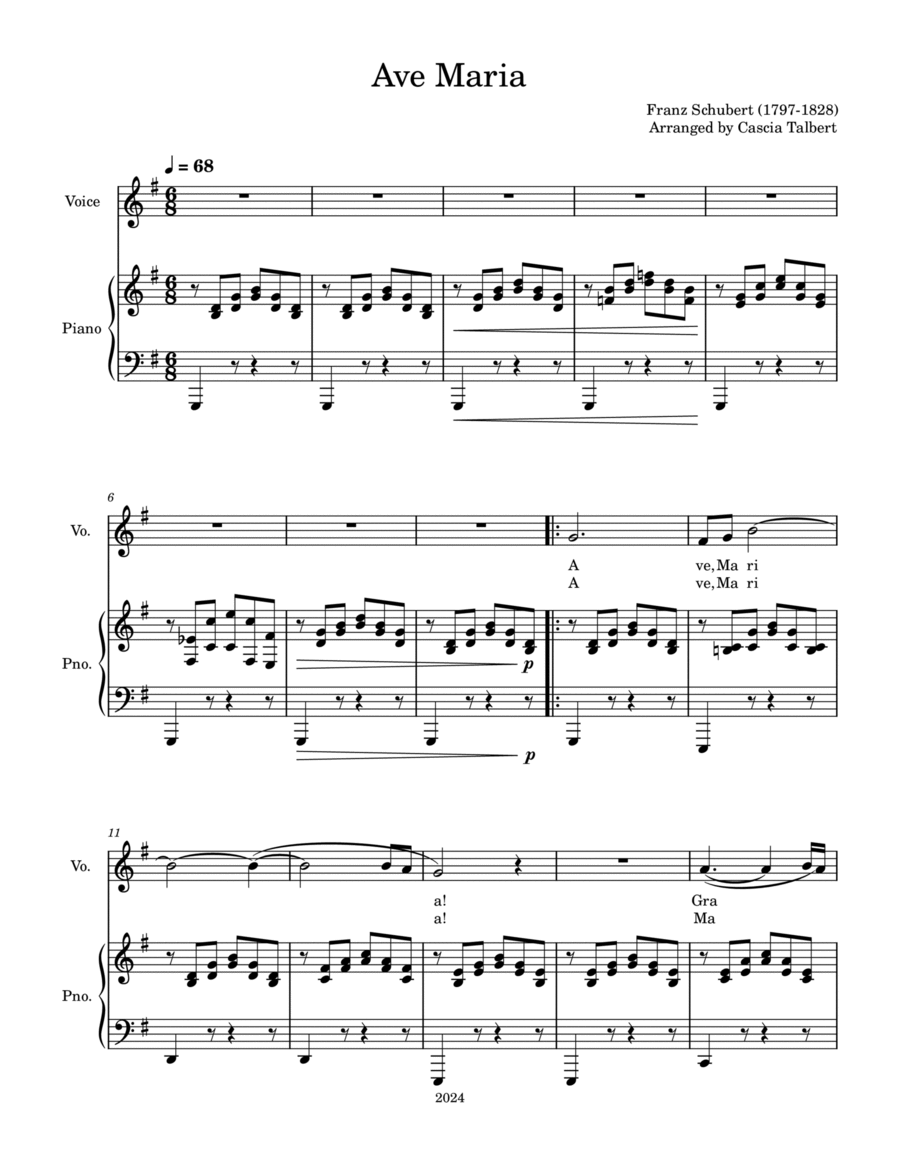Piano,Vocal,Voice - Level 5 - Digital Download SKU: A0.1490206 By Cascia Talbert. By Franz Schubert. Arranged by Cascia Talbert. Christian,Classical,Praise & Worship,Religious,Spiritual. Score. 7 pages. Cascia Talbert #1067042. Published by Cascia Talbert (A0.1490206). Ellens dritter Gesang (Ellen's Song III, D. 839, Op. 52, No. 6, 1825), known in English as Ellen's Third Song, was composed by Franz Schubert in 1825. It is part of his Op. 52, a collection of seven songs inspired by Walter Scott's 1810 narrative poem The Lady of the Lake, which was loosely translated into German.This piece is among Schubert's most beloved works. Although it was originally composed as a song, it is frequently performed and recorded under the title Ave Maria. This title references the Latin name of the prayer Hail Mary, which is also the opening phrase and refrain of Ellen's song—a prayer to the Virgin Mary. Performances often feature simplified musical arrangements and various lyrics that deviate from the original poem. Franz Liszt arranged the piece in three versions for piano.Schubert's composition is based on verse XXIX from Canto Three of Scott's poem, translated into German by Adam Storck (1780–1822). It is part of Schubert's Liederzyklus vom Fräulein vom See. In Scott's narrative, Ellen Douglas, the Lady of the Lake (Loch Katrine in the Scottish Highlands), seeks refuge with her exiled father in the Goblin's Cave, avoiding their previous host, Roderick Dhu, who has chosen to rebel against King James. As Roderick Dhu and his warriors ascend the mountain, he hears Ellen, accompanied by the harpist Allan-bane, singing a prayer to the Virgin Mary, pleading for help. Roderick Dhu pauses momentarily before heading into battle.The song is said to have been first performed at the castle of Countess Sophie Weissenwolff in Steyregg, Austria, and was dedicated to her, earning her the nickname the lady of the lake.The repeated use of Ave Maria in Ellen's song likely inspired the adaptation of Schubert's melody to fit the full text of the traditional Roman Catholic prayer Ave Maria. This adaptation has become so widespread that it often leads to the mistaken belief that Schubert originally composed the melody specifically for the Ave Maria prayer.This arrangement is for low voice and piano.
